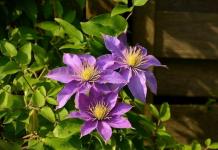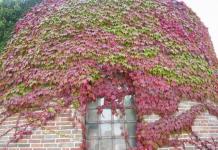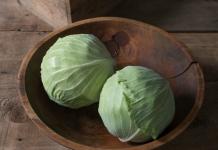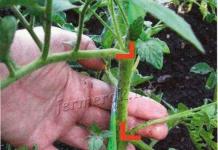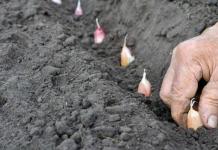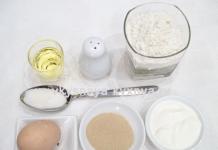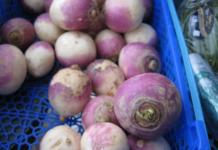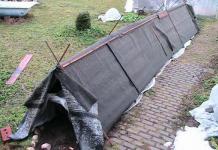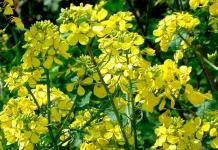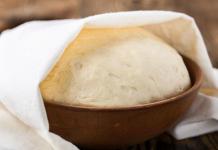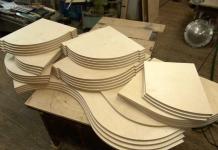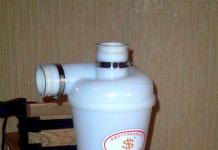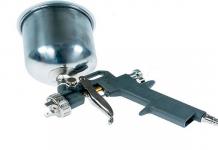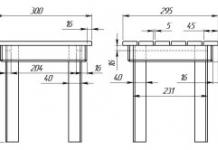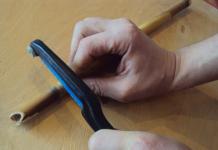Gardeners who have ever dealt with pear diseases know that they can kill the tree and fruit in a short time. To prevent this, it is necessary not only to know how to treat a pear, but also to determine in time from which disease the tree dies. Below is a list of pear diseases with descriptions and photographs. As well as options for its treatment for various diseases.
Pear diseases and the fight against them
Good to know!
If you find the source of the disease in time and prevent it, you can get a good harvest.
Scab
It affects many garden plants, including garden ones. The leaves and wood of the pear suffer from it. First, the lower part of the leaf is affected with the appearance of black dots. Then the disease migrates to the fruits, and they become covered with rotten spots, and the peel cracks. In this regard, the fruit loses its taste.
How to treat:
To get rid of the scab, you need a Bordeaux mixture solution. They need to spray the trees before flowering, during the appearance of buds and after flowering. The bark should be thinned out a little so that the pear is ventilated. What falls off during thinning should be removed and the leaves thrown into the fire.
With a progressive disease, you can resort to the chemical agent "Skor". Typically, this treatment is carried out at least six times per season. Before winter, the soil must be dug up properly.
fruit rot
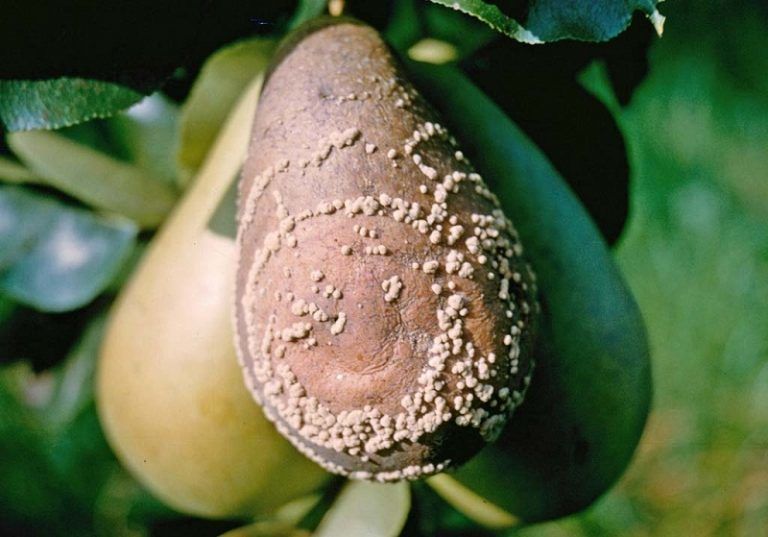 The fungus that infects the fruit causes brown spots, and over time, gray growths appear on them. In diseased fruits, the pulp rots, and the pears themselves fall to the ground. The virus is activated in the middle of summer, when the weather is dry and hot.
The fungus that infects the fruit causes brown spots, and over time, gray growths appear on them. In diseased fruits, the pulp rots, and the pears themselves fall to the ground. The virus is activated in the middle of summer, when the weather is dry and hot.
How to treat:
You can get rid of fruit rot by directly harvesting infected fruits and branches. In spring and autumn weather, for prevention, the tree is treated with a 1% Bordeaux mixture solution, and the leaves can be treated with lime and water.
Of the chemicals that will strengthen the immunity of the plant, the Baikal, Healthy Garden biococktail will help.
sooty fungus
From this disease, the leaves and fruits turn black on the tree. If the pear has reduced immunity, which is typical for young plantings, insects such as aphids worsen its condition even more.
How to treat:
When a sooty fungus appears, a soap-copper solution should be used together with Bordeaux mixture when spraying.
Interesting!
Sooty fungus is not afraid of the only variety of pear - the Cathedral.
powdery mildew
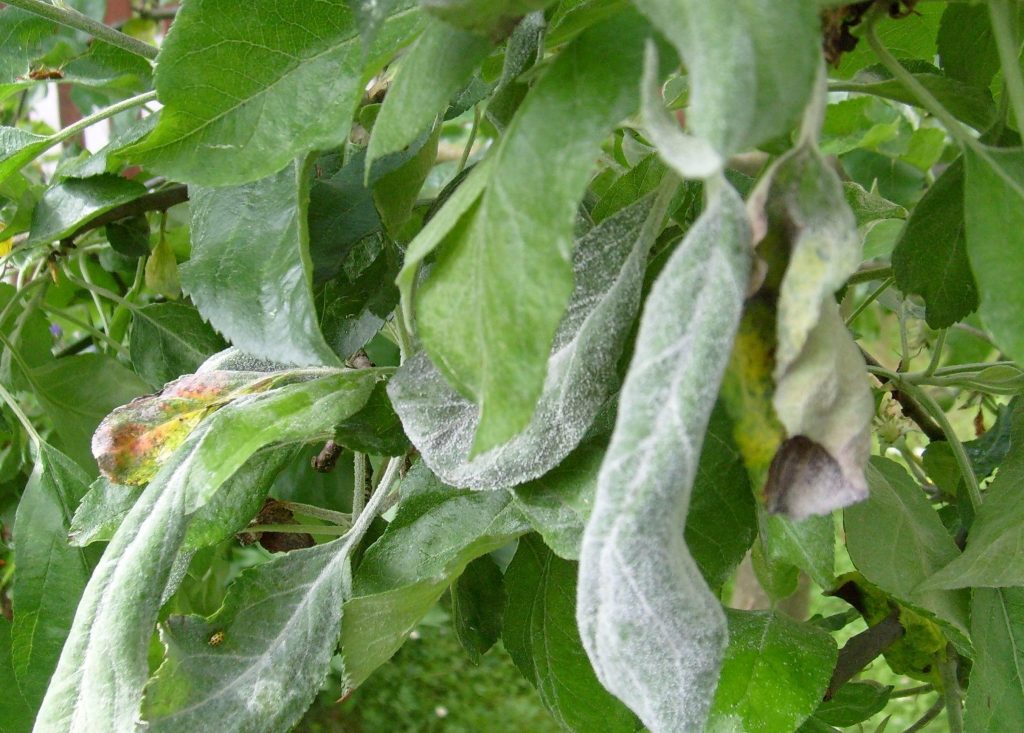 When a white coating appeared on the leaves on this horticultural crop, it means that the tree got sick. The plant soon begins to dry out and die. Leaves curl into a boat and fall to the ground. Young shoots are susceptible to such infection in the spring.
When a white coating appeared on the leaves on this horticultural crop, it means that the tree got sick. The plant soon begins to dry out and die. Leaves curl into a boat and fall to the ground. Young shoots are susceptible to such infection in the spring.
How to treat:
First of all, you need to get rid of those shoots that are already infected. In the extension phase, it is necessary to treat the buds with fungicides. Re-treatment should be done again, after two weeks.
Rust
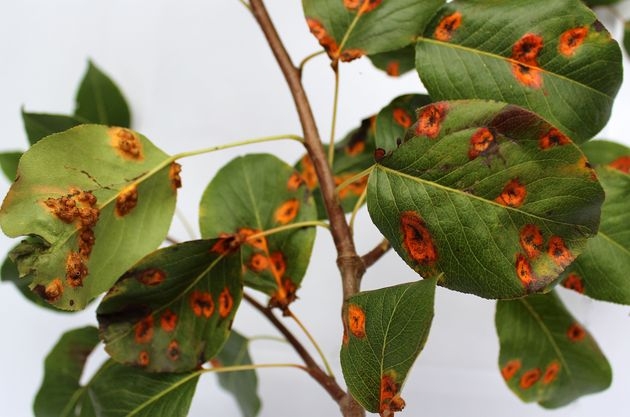 The fungus is the causative agent of this disease. Orange spots on pear leaves and shoots indicate the presence of the disease. Activation takes place in mid-April. The diseased areas of the pear are no longer capable of accepting photosynthesis. If the disease is started, fruitfulness stops.
The fungus is the causative agent of this disease. Orange spots on pear leaves and shoots indicate the presence of the disease. Activation takes place in mid-April. The diseased areas of the pear are no longer capable of accepting photosynthesis. If the disease is started, fruitfulness stops.
How to treat:
Experienced gardeners, when rust appears on leaves, more often destroy leaves and fruits susceptible to this disease. They argue that a solution of urea with copper sulphate, as well as ash mixed in marigold infusion, have proven themselves well. Spraying helps prevent this infection at an early stage, more often in the spring. All varieties of pear are susceptible to this virus.
Antonov fire
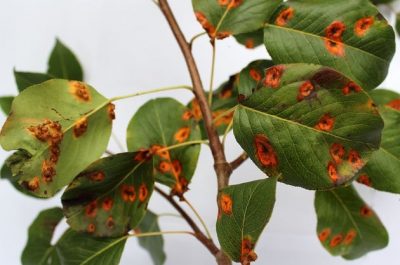 This is a pear-specific cancer that affects the bark of a tree and branches. It manifests itself in the form of cracks, which increase in size over time, and the bark bursts. Then brown spots pour out on the cracks, and the fungus penetrates into them. In this regard, other diseases immediately begin to move to the affected pear.
This is a pear-specific cancer that affects the bark of a tree and branches. It manifests itself in the form of cracks, which increase in size over time, and the bark bursts. Then brown spots pour out on the cracks, and the fungus penetrates into them. In this regard, other diseases immediately begin to move to the affected pear.
How to treat:
It is necessary to treat pear cancer slowly, carefully diagnosing the infected areas where the root cancer is located. Bordeaux liquid and a solution of copper sulphate have proven themselves to be the simplest and most effective means.
Bacterial burn
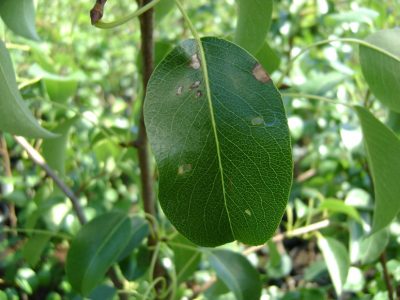 It is considered a dangerous disease that spreads from diseased trees to healthy ones. Can lead to the destruction of all horticultural crops. If you do not start fighting it in time, you can lose a beautiful site forever, and diseased trees will have to be burned.
It is considered a dangerous disease that spreads from diseased trees to healthy ones. Can lead to the destruction of all horticultural crops. If you do not start fighting it in time, you can lose a beautiful site forever, and diseased trees will have to be burned.
How to treat:
If the gardener found a bacterial burn on a pear at the initial stage, you can simply remove the affected branches and treat with a solution of copper or iron sulphate. As chemical methods, it can be treated with an Azofos solution or antibiotics: gentamicin, rifampicin.
It is best to start processing in late spring. To prevent inflorescence disease, it is recommended to treat with Bordeaux liquid.
With a more advanced stage of the disease, it is necessary to uproot or burn trees.
brown spot
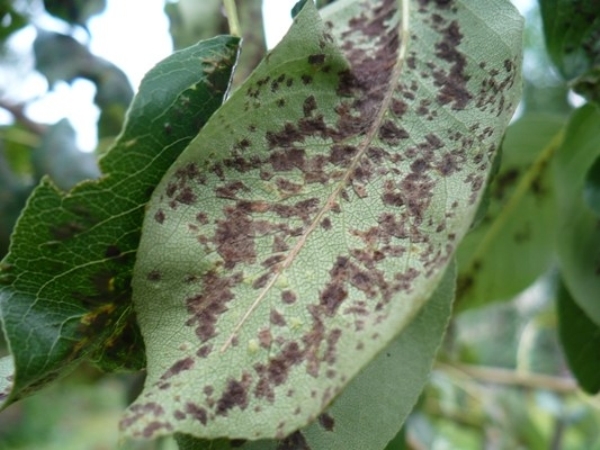 Begins to appear during the end of spring. Leaves affected by this disease are covered with brownish spots. Every day their number increases and falls to the ground. The period of strong disease activity occurs in mid-summer.
Begins to appear during the end of spring. Leaves affected by this disease are covered with brownish spots. Every day their number increases and falls to the ground. The period of strong disease activity occurs in mid-summer.
How to treat:
With brown spotting, infected leaves should be destroyed. Treatment of pear leaf disease is carried out with a fungicide in conjunction with copper. Spraying is recommended to stop after fruit growth.
Mosaic on leaves
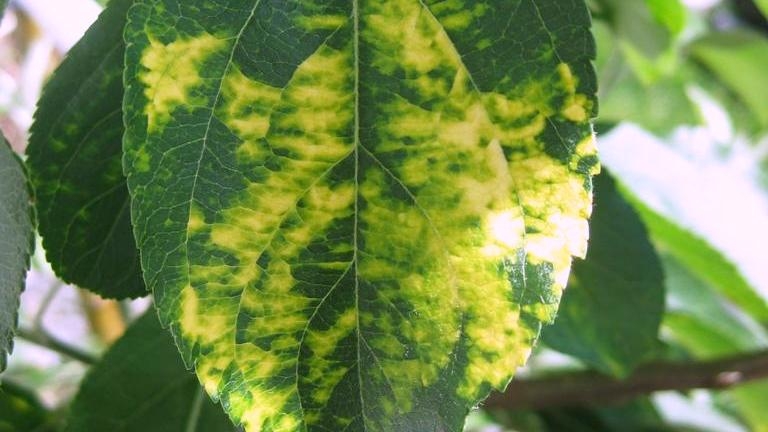 Often observed in young plantings on the leaves in the form of greenish spots. Some gardeners try to graft trees against all sorts of diseases, thereby risking infecting them with this disease during grafting.
Often observed in young plantings on the leaves in the form of greenish spots. Some gardeners try to graft trees against all sorts of diseases, thereby risking infecting them with this disease during grafting.
How to treat:
Mosaic on the leaves is not treated. If the disease progresses, seedlings or large trees can no longer be helped. It would be best to cut down such trees and burn them until the infection has migrated to healthy plants growing near the source of the disease.
Cracks in the bark
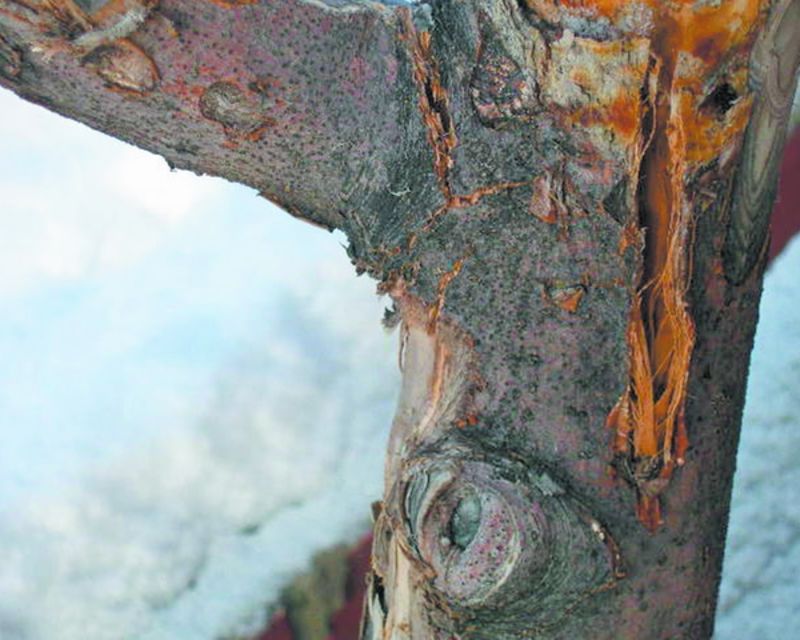 If small fruits and puffiness are observed, and the tree is covered with numerous cracks, then the plant is sick. But the cracks themselves are not yet cause for concern. Infestation that has engulfed plantings can penetrate wounds with spores and cause rot.
If small fruits and puffiness are observed, and the tree is covered with numerous cracks, then the plant is sick. But the cracks themselves are not yet cause for concern. Infestation that has engulfed plantings can penetrate wounds with spores and cause rot.
How to treat:
Cracks in the bark of trees cannot be ignored. Ignoring this form of the disease can lead to other infectious diseases. When treating, you should arm yourself with a metal brush, with which you can clean the damaged bark. If you don't have a brush, a knife will do. The next step will be the treatment of the bark with a solution of Bordeaux mixture with an antifungal drug (you can pick up any). Also used in the treatment of a solution of iron sulphate. At the end, after processing, the cracks are usually covered with wet clay.
white spotting
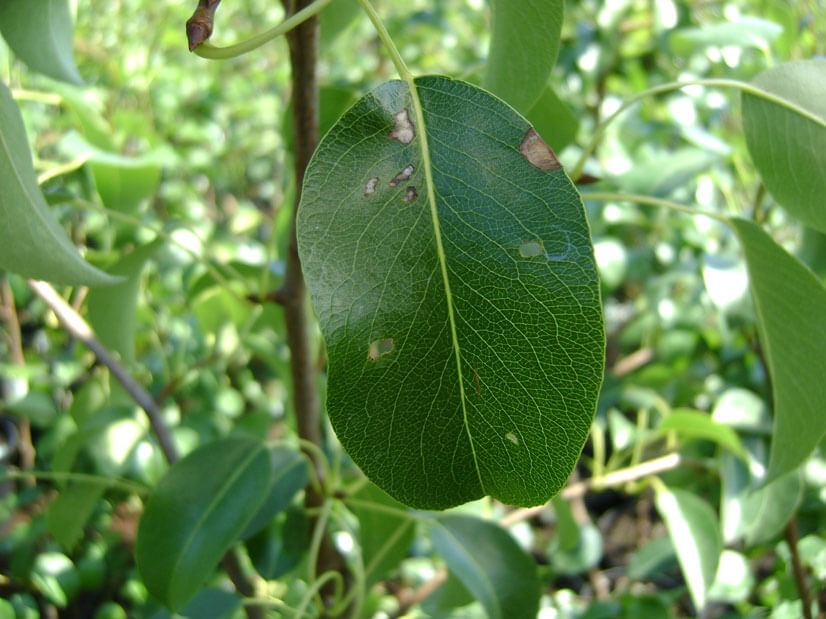 Caused by the formation of white spots on the surface of the leaves. As the disease progresses, the spots change color from white to yellow and then brown. As a rule, the infection begins in late spring, the plant's immunity deteriorates, the leaves fall to the ground, and lose the ability to resist winter. If left to the mercy of fate, over the years the disease will progress and infect other trees. It's all about the bacteria, which perfectly tolerate wintering and every year in the spring again infects the pear.
Caused by the formation of white spots on the surface of the leaves. As the disease progresses, the spots change color from white to yellow and then brown. As a rule, the infection begins in late spring, the plant's immunity deteriorates, the leaves fall to the ground, and lose the ability to resist winter. If left to the mercy of fate, over the years the disease will progress and infect other trees. It's all about the bacteria, which perfectly tolerate wintering and every year in the spring again infects the pear.
How to treat:
White spot treatment is carried out in early spring using a solution of nitrafen (10 liters of water per 5 grams of product). Even summer residents are accustomed to using a mixture of slaked lime and a solution of copper sulfate. Spraying is carried out for one season repeatedly. The initial period when you need to do this is April, when the buds are just blooming. Then during the appearance of buds and after flowering.
Some gardeners also carry out late processing. In this case, spraying is carried out to check the effect of the liquid on the leaves. For example, if there are no burns, it is recommended to process all parts of the pear.


